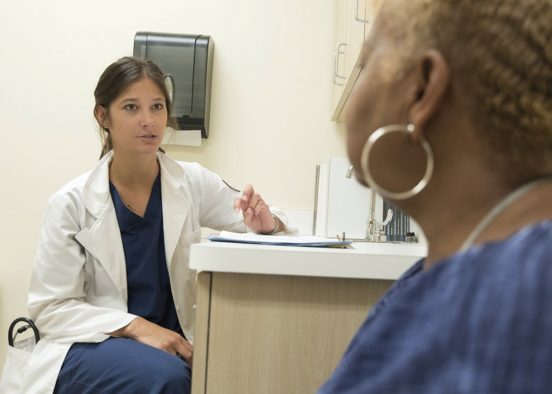Disease pandemics in history have regularly brought social inequalities and prejudice back to the surface.[1] Marginalised and vulnerable groups such as the elderly, the poor, migrants, and refugee populations are hit the hardest, both economically and socially, in such difficult times. The current COVID-19 crisis has, once again, exposed the fragility of human life and vulnerable groups are suffering the most.
In the UK, COVID-19 has disproportionately claimed the lives of the Black Asian and Minority Ethnic (BAME) population.[2] The BAME health workforce, and the BAME population, has been found to be at a higher risk of Coronavirus attack than the white British population.[3] The reasons for this, as suggested by the professional experts and media, are that this population has a higher proportion of underlying health conditions and of long-standing social inequalities and deprivation.[4] Early study findings suggest that the BAME health and social care workforce, already a high-risk group, has been assigned to frontline care, with potential exposure to the virus, by spending more time caring for COVID-19 patients, than their white British counterparts. Additionally, study findings indicate that BAME nursing and care workforce is more likely to be left without adequate access to Personal Protective Equipment (PPE).[5] Other essential workers, such as NHS support staff, and those working in transport and delivery services, have also been exposed to higher risks of COVID-19 virus infection, are also from the BAME background.
Additionally, care for the elderly and long-term health care sector has also suffered heavy blows from COVID-19, as a result the total death in this sector has exceeded the number of deaths in hospitals in the UK.[6] This sector is reported regularly to be underfunded [7] and often as having inadequate PPE in place. This sector too relies heavily on BAME workforce. The patients and their care workers are left with a higher exposure to the risks of COVID-19 compared to the general population.
The media in the UK has brought the BAME health and social care workforce, and ongoing social inequality and exclusion they face, into the spotlight, alongside the elderly, people already ill, and those with underlying health conditions. Knowledge of this disparity is an additional stress for racialised healthcare and the essential service workforce. As such, the BAME population in particular is now simultaneously fighting double crises: the COVID-19 crisis as well as ongoing social inequality and exclusion. This is a crucially important issue, requiring better understanding and public policy attention.
The BAME health and social care workforce and ongoing social inequality
The BAME nursing and care workforce has been a disadvantaged group throughout the history of the British healthcare system, with reports of discrimination, bullying and harassment at their work. At a professional level, there is evidence that the BAME healthcare workforce is more likely to experience workplace discrimination and be under-represented at senior management levels in the NHS.[8] For example, 43% of the NHS workforce in London is from a BAME background, yet only 14% of board-level positions were held by people from a BAME background in 2017. The BAME workforce is more likely to be in zero-hour contracts, and in low-paid and insecure jobs. On top of this, ongoing social marginalisation and inequality places this workforce in a further disadvantaged position. Even when BAME nurses and care workers fear catching COVID-19, especially given current statistics, they are assigned to frontline care and new recruits are more likely to say no to the frontline work.[3]
Time to address structural issues and put things right
NHS employers in Britain have acknowledged the fact that the BAME health workforce is at higher risk of contracting COVID-19 and of becoming seriously ill because of it, as evidenced by their being disproportionately affected by the Covid-19 crisis.[3] As the social and political pressure to protect the BAME population has escalated, NHS employers have started looking into management strategies to protect this workforce from attack by the virus. Current strategies include: the BAME workforce being recognised as a risk group; managers are to carry out risk assessments before BAME staff take up any work; and finally, the BAME group has been prioritised for COVID-19 testing.[9] However, there is a need to extend these strategies to include those who work in the private care home sector. These should not just be in Government policy documents and exist as paper exercises for health service managers, but need to be implemented seriously and consistently across all health and social care sectors.
Addressing structural issues and social injustice is crucial while fighting against the virus. This is an important time for a sustained and collaborative effort towards making more equal and inclusive workplaces and societies. Also important is preparing to deal with future threats. The COVID-19 crisis has not only brought underlying social inequalities and prejudices to the surface again, but also an opportunity to put things right.
This article was originally published by Justice in Global Health Emergencies & Humanitarian Crises: https://www.ghe.law.ed.ac.uk/covid-19-and-the-black-asian-minority-ethnic-healthcare-workforce-by-radha-adhikari/
Radha Adhikari is a Research Fellow in SSPS, and currently working on a project examining the ‘Documentation of Nepali migrants’ death, injury and ill-treatment in transit and destinations’. Currently, the research fieldwork has been on hold due to Covid-19 outbreak.
References
[1] A. Acharya, ‘A brief history of pandemics and prejudice‘, (The University of Edinburgh Covid-19 Response, 8 April 2020).
[2] C. Barr and others, ‘Ethnic minorities dying of Covid-19 at higher rate, analysis shows‘, The Guardian (22 April 2020).
[3] S. Jones-Berry, ‘Covid-19: review will assess if ethnicity puts some healthcare staff at higher risk‘, (Nursing Standard, 17 April 2020).
[4] B. Butcher and J. Massey, ‘Why are more people from BAME backgrounds dying from coronavirus?‘, (BBC News, 19 June 2020).
[5] Royal College of Nursing, ‘BAME nursing staff experiencing greater PPE shortages despite Covid-19 risk warnings‘, (Royal College of Nursing, 28 May 2020).
[6] The Health Foundation, ‘What has been the impact of COVID-19 on care homes and the social care workforce?‘, (The Health Foundation, 15 May 2020).
[7] CMA, ‘Care homes market study: a summary of final report‘, (GOV.UK, 30 November 2017).
[8] GOV.UK, ‘NHS staff experiencing discrimination at work‘, (GOV.UK, 12 August 2019).
S. Jones-Berry, ‘NHS workforce Diversity; how to speed up the “Glacial” pace of progress’, (2018) Nursing Standard, 32(1).
D. Jarvis and P. Reeves, ‘Enabling BME Nurse and Midwife Progression into Senior Leadership Positions‘, (NHS, 2017).
R. Kline, ‘The “snowy white peaks” of the NHS: a survey of discrimination in governance and leadership and the potential impact on patient care in London and England‘, (2014) Middlesex University Research Repository.
M. Randhawa, ‘Closing the gap on BME representation in NHS leadership: not rocket science‘, (The King’s Fund, 16 March 2018).
[9] N. Kituno, ‘Revealed: the NHS’ plan to protect BAME staff from covid-19‘, (HSJ, 6 May 2020).










Comments by Ritti Soncco